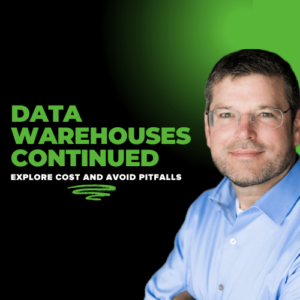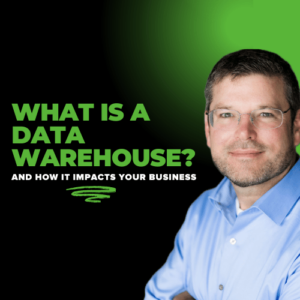Welcome to Love Your Reports. I’m Paul Felix, your host, and this is episode number three. In today’s episode I want to talk about value. Whenever you’re building a reporting solution, ultimately, we’re trying to add value and it’s pretty darn important that we have some structured way of measuring the value that we’re going to be adding, or we hope to add, so that’s what we’re going to talk about here today.
Over the past week or so, I’ve been on the road, and I’ve had the opportunity to sit down and meet with prospects and clients, and really, we’re talking about what are we trying to achieve in the coming year or so, or in the near term. And when we’re doing that, we’re thinking, first, what opportunities do we have? And which of those opportunities are the lowest hanging fruit, which one of them are going to return the largest value for the organization, the quickest? Or maybe even the ones that we can support with the least amount of effort and still capture that value. So, it just became apparent that we really have to have a clear understanding of value, so we can measure that value and hopefully come up with an actual number that we can use to determine if we were or were not successful in meeting our objectives.
So, before I jump into the components of value, at least in the way I think about them, I want to talk a little bit about the triple constraint. I think it ties directly into this conversation, and the triple constraint, you may already be familiar with this, but the triple constraint briefly is the intersection of three different components. When you think about a project or a process, that project or process has cost associated with it. It has a certain speed or speed of delivery associated, and then there’s the quality mechanism, or quality component. Also, maybe you can consider that the scope of the process.
And the theory here is that if you impact one of those components positively, one or two of them positively, you’re going to have to negatively impact the other. So, if you’re able to reduce cost and maintain the same speed, then your scope is going to have to be reduced for all things to be equal. Or if you increase your scope and you increase your speed, then you also must increase your cost. So, I’m bringing this up because when I think about value, I really think it’s sort of easy to understand if we just simply say we’re breaking the triple constraint. Our goal here is to break that constraint. In other words, we want to have a reduced cost and we want to maintain or increase our speed and quality. That’s adding value. It’s not keeping everything equal, it’s a value add. Or we want to be able to increase the speed at the same cost and quality. Again, that’s adding value. So, the triple constraint, I think, is a useful tool to help us as we’re trying to quantify this value opportunity.
All right, so let’s jump into the components of value. I like to break value down into three categories, and these three categories are expense reduction, increase in revenue, and risk reduction. Let’s talk about each of those three. Starting out with expense reduction, this one is probably … This is what all of us are often thinking about. If we’re going to increase value or improve something with reporting and we got an existing process out there, we can easily say that process is consuming X amount of resources, it’s taking a certain amount of time to be implemented, and here’s our quality measurement. This is how often we’re successful in that process or unsuccessful. So, we can really measure what’s going on today with some process. Then we can say great, if we’re going to take the cost of that process and reduce it; then of course, that’s an expense reduction. And if we do so without compromising the speed or quality, then we’ve added value.
Now the expense reduction here doesn’t just have to be the direct cost of that process, right? So, we can take a well-designed reporting solution and inject it in a process, make that process faster, and therefore, we’ve reduced the cost because now we need less resources. Now we need less whatever it is, it takes less cost of goods to do this thing. So, it’s not just the direct cost equation that results in an expense reduction, but it can also be increasing the speed of a process or reducing the number of faults within a process. All these things can reduce the overall expense of a process.
Now the other thing about expense reduction is that we might be looking at something, a process that’s all already in place, there’s already money being spent on something, or we could be looking at a process which we’re trying to figure out how to put in place. And of course, whenever you already have the process in place, it’s a lot easier to quantify the cost of that process. Again, we can sit down, and we can say, “Well, here’s the people involved, here’s the overhead involved, and here’s the results of that thing.” And we can really quantify that to the point where you say, “Okay, this thing is costing us $100 a week and it’s yielding, whatever, $200 a week.” So, there you go, that’s our baseline. So, if we’re going to reduce the expenses on this thing, then we’ve got to either take that $100 and turn it into $50 or take the $200 that it’s yielding and turn it into $300. Those are both ways of expense reduction.
So, the next category here is the opposite, this is the increased revenue. If we’re going to increase the revenue, in the example that we just gave, we have to kind of step away from the expense side of it and say, “Well, how do we make this thing more valuable? How do we actually get a larger return from this investment?” The same principles apply here, of course, where if you have an existing process and you’re just trying to improve it, then it’s a lot easier to measure this thing. We can say, “Okay, here’s what we’re getting out of this existing process and if we’re going to improve it, then how do we get more out of it without investing more into it?” Then that would be an increased revenue resulting in an increased value.
And of course, if it’s a new process and it’s a little more difficult, we don’t know exactly what it’s going to cost. While it is more difficult to calculate things, it really shouldn’t be a blocker here in identifying the value because if you’re starting a process. You already recognize there’s value in creating this process and you want the process to run efficiently so it can be as valuable as it can possibly be made. So, part of that process cost could be calculated with and without the use of accurate and timely reporting so that the process runs efficiently.
And you really could say that expense reduction and revenue increase, are pretty much the same thing in a way, right? When we talk about reporting, we’re again, injecting reports within a process or we’re assisting someone in making better decisions, which is a process. So rather or not the report is reducing expenses or increasing revenue is … In the end you decide what you want to call it. If we’re increasing the speed of something and therefore, reducing cost and increasing the revenue that’s able to be captured within a period, are we increasing revenue or are we reducing expenses, right? It’s really one and the same whenever you think about this from an efficiency standpoint.
Now the third category is risk reduction. It is more difficult to capture the actual value that’s associated with this one. What is the value in reducing risk? Again, that’s more difficult, but here’s how I would think about this. If you are looking at a process and at the failure scenario of that process. If we’re going to do this thing and it fails, what is that going to cost us? That’s the first variable that we want to figure out here. If we’re going to build this thing, if we’re going to put this process in place, what if it fails? How much does that cost? And often you have to say, “How much does it cost within a month or how much does it cost within a quarter?” Or whatever it is, you’re going to have to put that into some type of scope.
And once you know what the cost of failure is, then the next question becomes well, how much of that cost can we mitigate? If this thing failing is going to cost us $500,000 and we can mitigate, we believe by whatever, by decreasing the amount of time it takes us to identify the risk or likely failure, or eliminate the failure, one or the other. How much of that risk can we mitigate? If it’s $500,000 in risk, and we can mitigate $300,000 of it. Well, now we got two numbers.
The next part of that equation is going to be the likelihood of failure. If you know that you’ve got a $500,000 risk and you know based on history, or it could just be based on intuition here, but you know that there’s a good chance that something is going to fail at some point in the future. Let’s just say, it’s going to fail once within the next year, then if that’s the case, well, now we got a $500,000 cost at some point in the next year. And if we think that we can reduce that failure, or we can mitigate $300,000 of that risk, well, there we go. Now we got a $300,000 value on this investment. Now there is going to be a remaining risk in that scenario, which is nearly always going to be the case when we’re talking about calculating risk and risk mitigation.
Now the other side of risk, I think, is where we just simply talk about monitoring something. If you’re the CEO or the manager of any process, and let’s just say you’re not able to measure that process in any way, shape, or form. It’s just kind of going along day by day, and you don’t really know if that process is being successful or unsuccessful, or maybe you know it’s going to be successful and unsuccessful at some delayed point in the future. This is often the case when we talk about managing processes, because it’s not the managers often that are involved in the day-to-day operations, it’s the individual contributors who are in there doing this thing, and they may have some feel for how things are going, but the leadership or the management of the process needs to understand where they’re at on meeting the goal.
So, the monitoring piece of this is it falls into this risk reduction side of things. You could really say it falls into any of these categories, expense reduction, increased revenue, or risk reduction. But I feel like it, it falls into risk reduction because again, just thinking from the CEO standpoint, if I can’t monitor my business and understand what’s going on, let’s just say from a month-to-month basis, or even month to date basis, then it’s going to be after something fails before I’m aware of that failure. I don’t know the failure is coming until after it happens.
So, what’s the value in measuring something? Maybe I could figure it out that there’s a failure in a month versus finding out at the end of the quarter when all the financials come out. And then, oh, we didn’t meet the goal and now I don’t have any time to impact anything to improve that situation. So that’s the risk reduction side of things. And again, the common theme here I think to be fair when we’re grading a process, or a project even, is we’ve got to compare an ideal scenario to the current scenario.
Here’s what we have today currently if we don’t have reporting in place, or we have inadequate reporting in place, or we have any reporting in place. What would that look like in an ideal scenario? And can we create that ideal scenario by improving the process, by giving the decision makers the information they need to make better decisions. By taking the business process, identifying the decision point, and injecting information into that process it takes a path that more often results in success.
All right, so we’ve talked quite a bit here about how we can calculate value, which is again, very important because we must be able to know what the opportunity is before we decide to invest in capturing that opportunity. But that investment is the next part, and it’s easy at this point. We don’t have to guess a whole lot about what it takes to deliver on the reporting solution that’s required to capture this value.
And we’re going to talk about that more in future podcasts, but here, let’s just say that we do calculate the cost of a reporting solution and if that cost is lower than the value that we’re trying to capture, and we think we can do this at a high level of confidence then it becomes a no brainer, we need to get this solution in place. On the other hand, if there’s no value to be captured or if the reporting solution is going to exceed the possible value that we can capture, well, then you should never undertake the process of building a reporting solution at all, at least not until that value proposition changes.
Now one thing I want to mention here is that when you’re building your Reportopia and you’re starting from scratch, it’s going to cost more to meet the first milestone. If you’ve identified a value proposition that is worth $50,000 to you every year, the very first effort that you undertake has more costs associated with it because you need to build that foundation. There are all kinds of things that need to happen, and you have got to get this thing off the ground.
So, the very first build out is going to cost more. It might cost you $20,000 to meet that first deliverable or first value opportunity. But after you have this thing off the ground, assuming you’re building on a solid foundation and you’re following the best practices, hopefully future opportunities become a lot easier to capture because you’ve already got this foundation in place. Maybe you just need to extend it a little bit so you can get this new opportunity captured. Or maybe you’ve already got everything in place that you need, it’s just a matter of authoring a new report or tweaking something a little bit so you can capture this new opportunity. So again, the initial effort may be a little bit more expensive, but once you have that foundation in place, future opportunities should be easier to capture.
All right, so let’s just recap here briefly. So, we started out today talking about value propositions, and we talked briefly about the triple constraint, the cost, speed, and quality. And then we broke the value components down into three categories, expense reduction, increased revenue, and risk reduction. We talked about how we might calculate each of those things or how they impact the triple constraint. And in the end, it’s quite simple, before we get started, we need to identify the value. We need to know exactly what the opportunity is, and we need to understand what it’s going to cost to capture that value.
Okay, I’ll leave it there this week. If any of you have any feedback for me, feel free to reach out, Paul@LoveYourReports.com is my address. You can find me on Twitter at @PaulBFelix. Wish you all the best. Happy reporting.


